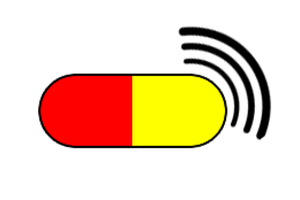Project Abstract: -
Alzheimer's disease is a disease of the elderly. It affects these people and their families negatively, both physically and psychologically. Therefore, this project aims to create a device in the form of a smart bracelet with technologies internet of things and Artificial intelligence an integrated health care and well-being system help the Alzheimer’s patients to live a better life with less affordable price, higher performance and does not affect his psychological or physical condition. One of the most important of that device is that it is water-resistant so that it can be worn throughout its daily life. The device can locate the Alzheimer's patient if he is left unaccompanied and display his location on the mobile phone connected to the device, thus facilitating finding to the person with Alzheimer's disease. And it provides him with other advantages and possibilities that help to save his life by sending an alarm at the time of his medication and his personal interviews by voice. The application also contains some instructions for Alzheimer's patients to maintain their privacy and data. It also contains other features such as follow-up of the Alzheimer’s patient’s medical condition and send it to his companion through an application available on the bracelet. So, this device keeps pace with the sustainable development goals and Egypt's 2030 vision. As it can contribute to achieve sustainable development third goal: good health and well-being and ninth goal: Innovation, industry, infrastructure.
Introduction: -
Today, the world is heavily dependent on technology It has become necessary to take care of its implementation in various fields of life perhaps one of the most important areas in which technology can employ the medical field for its applications in diagnosis, treatment and prevention of various diseases one of the most important medical achievements of modern times are the various medical applications that try to help people maintain their health the most important of which are applications that calculate calories in food, improve the nature of sleep, and measure heartbeats in addition to the tools that can be used to determine the health status of the user and inform them immediately.
One of the most prominent diseases requiring ongoing care and follow-up is Alzheimer's disease according to the World Health Organization (WHO) definition (2021) the disease is characterized by deterioration in memory, thinking, behavior and the ability to carry out daily activities, primarily affecting the elderly according to the World Health Organization (WHO) there are 47.5 million infected people worldwide.
Perhaps one of the most important technological applications in this case is to raise the level of safety if the person with Alzheimer's disease moves unaccompanied. The current project aims to provide a smart bracelet to make it easier to find the Alzheimer's patients if they leave unaccompanied its innovative design, waterproof that integrates well-being with health care in one way so that the Alzheimer’s patient can live his life better by locating him in the event of his leaving unaccompanied and reminding him of his treatment dates the bracelet also contains a database that stores any data that needs to be added, whether images or texts. Which helps in achieving the economic income for their families and their concentration in their businesses, and then the project works to achieve the innovative, pioneering and humanitarian part of the sustainable development goals and Egypt’s Vision 2030 to keep pace with the labor market.
Project Problem: -
Alzheimer's disease is a life-threatening disease. It has physical, psychological, social and economic effects on those who care for patients, their families and communities. The disease leads to deterioration in memory, thinking and behavior in people with it, especially the elderly. One of the most important problems...
Read more » Yassin Ali Salah Ali
Yassin Ali Salah Ali
 Shranav Palakurthi
Shranav Palakurthi
 José Luis
José Luis
 rmunoz00
rmunoz00